College Admissions
College Admissions
Preparing for College
The Best College for You
What to Study
Applications
Education Options
Education Options
Private Universities
Public & State Universities
Community Colleges
Scholarships
Scholarships
African American Scholarships
Latino Scholarships
Native American Scholarships
Women Scholarships
College Grants
College Grants
Federal Grants
Merit Based Grants
Need Based Grants
Student Loans
Student Loans
Federal Student Loans
State Student Loans
No Co-signer Student Loans
Bad Credit Loans
Student Loan Consolidation
College Survival
College Survival
Financial Aid Tips
The Digital Student Blog
Some people use the adjective “good” to describe the debt students take on during the pursuit of their college diploma. We would use a different word to describe it:
Oppressive
A quick check of the dictionary has this to say about the adjective oppressive:
1. burdensome, unjustly harsh, or tyrannical.
2. oppressive sorrows, causing discomfort by being excessive, intense, elaborate, etc.
3. distressing or grievous:
 So now I am sure some of you would insist that we are being a tad bit excessive with our rhetoric, that we are invoking extreme levels of hyperbole in our use of the word oppressive. We would suggest you need to think again.
So now I am sure some of you would insist that we are being a tad bit excessive with our rhetoric, that we are invoking extreme levels of hyperbole in our use of the word oppressive. We would suggest you need to think again.
As proof positive, today we learned that 42 Tennessee nurses have had their licenses suspended because they were in default on their student loans. That’s correct, 42 nurses lost their ability to actually earn a living in their field of study because they had not paid off their loans.
Incredible Power
A disciplinary action report released this month by the Tennessee Department of Health made this issue public. Though only brought to light now, the report revealed the large number of suspensions actually took place last October.
The suspensions were based on the actual implementation of a law that dated back to 1999. At that time, state law was enacted that allowed officials to revoke the professional licenses of those in default on their student loans.
That bears repeating, the law has been in effect for the better part of ten years but state authorities were just now getting around to cracking down on those students that were delinquent. The Chattanooga Times goes on to note that 20 of the nurses have been able to work out repayment plans and have subsequently been reinstated. Of course that also means that the other 22 have not done so.
Across the state of Tennessee, since the recession began in 2007, loan default rates have risen to about 9 percent. This means that one of every eleven students in the state is in default.
Of course, the basic assumption that the local authorities make (read the article) is that these individuals are simply not taking their responsibilities seriously. That could well have been the case with the 20 who were able to square things away immediately.
But it could well be a different story for the other 22. Perhaps they were not simply ignoring their loans but instead had reached the position where they were over-committed and thus unable to pay their loans along with their basic living expenses. Nurse salaries being what they are, that could just as well be the case.
Need to Limit Your Debt
We have noted on many occasions the importance of limiting the amount of money students borrow for their education. We have expressively made mention of the need for students to understand the terms of student loans prior to signing on the dotted line.
When you borrow money for a car and default, you lose the car, your down payment and any money you paid to date on the vehicle. When you borrow money for a house and default, you lose the house, your down payment and any money you paid to date on the house.
 In both cases, your credit rating suffers as well. But in both instances, the debt does not follow you – instead you can keep your wages and your job and thus move on with life.
In both cases, your credit rating suffers as well. But in both instances, the debt does not follow you – instead you can keep your wages and your job and thus move on with life.
Not so with student loans. They will follow you. If you default on your student loans the IRS can withhold your tax return and the government can garnish a portion of whatever you earn to make payments on the loan. And, as noted in the Tennessee case, the government can go so far as to revoke your ability to earn a living in your chosen field by suspending your professional license. We suspect that the situation in Tennessee is harbinger of more to come in this arena.
In very simple terms, student loans are unlike any other form of loan you can take out. And if you find yourself in tough economic straights, well then it appears you would then be privy to why we call student loans oppressive.
Last week we shared with readers the story of 23-year-old Kelli Space, her $200,000 plus in student loans, and her unique method of addressing her dire position. At last check, the young lady had secured donations totaling more than $7,500. Though still $192,500 more is needed, she has to be pleased with both the publicity her plight has drawn and the fact that she is making some progress.
This past week, Justin Cox revealed his effort to deal with his equally difficult position. He too has his own web site, StrummingAwayMyLoans, and has resorted to the loan challenge in what some might call a beggarly way.
“For the next year, I will play music in public at least once per week (in a subway, on a corner, in a coffee shop, wherever),” writes Cox. “I’ll keep a tip jar in front of me, and every single penny I make will be thrown in the direction of those loans. It will be both financially productive and artistically healthy.”
 While some might cast this street musician in a negative light, Cox’s philosophy on the issue is transcendent of the typical view. In fact, there is a lot of respect for someone who notes that there are options for those willing to search.
While some might cast this street musician in a negative light, Cox’s philosophy on the issue is transcendent of the typical view. In fact, there is a lot of respect for someone who notes that there are options for those willing to search.
“Whether it’s cooking, painting, jewelry making or working on your car, your debt can be the motivational catalyst that forces you to revive a dying passion or hone a natural talent,” states Cox. “It’s the ultimate, lemons-into-lemonade approach.”
It is nice to see someone digging deep, looking for any way to earn some additional funds to address their college debt. But street musician is a tough way to make a buck – instead of some $7,500 Cox reveals he took in 37 dollars in his first full month. Not exactly game changing when your loan payment is some $700 a month.
Other Unique Options
Young Mr. Cox and Ms. Space offer their unique approaches to what is a very tough situation. As for other unusual methods, the folks at CollegeScholarships offer some unique options as well.
Suggestion number 110 on their list represents just such an option:
We’re not endorsing prostitution, but if you can give some of yourself by donating blood plasma, you can net an extra couple hundred dollars a month.
Number 111 is similar.
Volunteer for a medical study. Most do not require much time and you get paid!
They do not suggest as much but we know of a young woman who has been giving thought of donating her eggs to a fertility clinic.
Yes, there are the ethical concerns associated with being a donor or being a guinea pig in a medical study, but then again we would suggest there are ethical concerns associated with virtually all of the aforementioned methods.
But if you took out those loans, then there are the ethics associated with meeting your loan payments.
Get Busy Taking Control
But it is suggestion numbers 112 and 113 at CollegeScholarships, two that mirror the philosophy of one Mr. Cox, that we like best.
Sell your expertise in a subject as a tutor, computer skills, music lessons.
We would add that while tutoring you counsel your charges to think twice about taking on gobs of debt.
Get a job in the food service industry. Chances are high that you can eat for free!
Yes, even if it is only to work part-time, flipping burgers could carry some much needed benefits.
Here we turn back to Mr. Cox and his philosophy:
“The goal is not fame and fortune; it’s art and, hopefully, a little bit of financial relief. I still get stressed by the fact that I’m staring down the barrel of decades of debt, but I take some very real comfort in the fact that I might strum a few of those years away.”
The bottom line is get busy – taking charge of your situation is the first step towards progress and ultimately feeling better about yourself.
When it comes to earning a college degree, students must do a better job of shopping around.
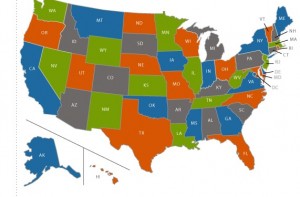 Unfortunately a new report from the Project on Student Debt confirms that the debt load for college graduates continues to escalate. For the most recent set of graduates for which full data is available, the Class of 2009, the average debt load increased yet another 6% from its 2008 levels.
Unfortunately a new report from the Project on Student Debt confirms that the debt load for college graduates continues to escalate. For the most recent set of graduates for which full data is available, the Class of 2009, the average debt load increased yet another 6% from its 2008 levels.
That puts the average student debt load for a graduate in 2009 at $24,000. That number becomes even more critical when one considers the unemployment rate for young college graduates rose from 5.8 percent in 2008 to 8.7 percent in 2009, the highest annual rate on record.
The Debt Load
Though the average debt load number is significant, it is imperative that students understand that the variability of debt from school to school and state to state is extremely large. Simply stated, students can significantly limit their accrued debt by choosing an appropriate school.
First of all, at the state level, debt at graduation from four-year colleges ranged from $13,000 to $30,000. The highest debt states continue to be concentrated in the Northeast while the lower debt states are primarily in the West.
But as great as the discrepancy is state-to-state, the variation from college to college is far greater. According to the report, the campus debt ranged from as little as $3,000 to a maximum of $61,500.
And while most tend to think that those with higher tuition are the culprits, the report found many examples of schools with high tuition rates and low debt. As a rule, however, those schools with higher tuition rates did post higher debts.
Most importantly, this data taken collectively indicates that the decision as to where to go to college and which specific college to attend can dramatically impact the final debt load of a graduating student.
Controlling Debt
 The increased debt load of students in the Northeast is attributed to a couple of factors. First, both private and public four-year colleges in the Northeast have higher than average tuition rates.
The increased debt load of students in the Northeast is attributed to a couple of factors. First, both private and public four-year colleges in the Northeast have higher than average tuition rates.
Second, the report notes that a larger than average share of students in the Northeast attend private nonprofit four-year colleges instead of public. The result of these two factors, both controllable factors for students, produce higher average debt loads for students in this region of the country.
The news out of New Hampshire is doubly troubling – the state ranks second in student debt load with an average of $29,443. In addition, a full 72% of graduates end up with some form of debt, a percentage that ranks the state 5th overall.
The District of Columbia ranks highest in average debt at $30,033. But another important factor is that a much lower percentage of students, 51%, graduate with some form of debt. That figure ranks the District of Columbia 38th overall.
Clearly, different choices by students impact this data immensely. The bottom line is that there are schools that consistently produce graduates with high levels of indebtedness and those where the opposite is true.
Private versus Federal Loans
The report also reveals some very interesting results when looking at the type of loans students take on when incurring their debt.
 We have often noted that other critical element in the loan process, the use of private versus federal loans to help fund the costs of college. Private loans lack the basic consumer protections and flexible repayment options that accompany federal student loans including deferment, income-based repayment, and the potential for loan forgiveness.
We have often noted that other critical element in the loan process, the use of private versus federal loans to help fund the costs of college. Private loans lack the basic consumer protections and flexible repayment options that accompany federal student loans including deferment, income-based repayment, and the potential for loan forgiveness.
Because private loans also typically have uncapped, variable interest rates, these loans generally cost more for those students who can least afford the additional expenses. Therefore private student loans continue to be one of the riskiest ways to pay for college and should be avoided by students if at all possible.
However, according to the report, about 33 percent of all bachelor’s degree recipients in ‘08 graduated with private loan debt. When all graduates were taken collectively, the average private debt totaled $12,550 for the ’08 grads.
Here again, the report details significant variation in private loans depending on the school. As but one example, only nine percent of the overall student debt at Indiana University-Northwest (IN) was composed of private loans, compared to 41 percent at Bowling Green State University-Main Campus (OH). Yet both of these colleges had very similar levels of overall borrowing.
The data once again reveals that at some schools students not only wind up with more debt, they amass more of the worst kind of debt a student can accumulate.
Message for Students
There are several key messages for students to take away from this recent report. Unless a student is from a family with unlimited means, all of the data points to the need for students to do their homework before applying and committing to a particular school.
In addition to the many key elements such as programming options, size of school, type of campus (rural or metro), etc., it is imperative that students carefully review the data from the Project on Student Debt. As with programming, not all colleges are created equal. With a little extra research, it is possible to choose a college that is known for helping you control your acquired debt even as you earn that all-important degree.
The problem today is that too many students are not doing their homework and in doing so, are mortgaging their future in the process of earning that coveted degree.
Schools with high levels of debt:
| High Debt – Public Schools | High Debt – Private Schools |
| Alabama A & M University | American University |
| Alabama State University | Buena Vista University |
| Bowling Green State University-Main Campus | Cleveland Institute of Art |
| Ferris State University | College for Creative Studies |
| Fort Valley State University | Eastern Nazarene College |
| Indiana University-Northwest | Florida Institute of Technology |
| Iowa State University | Green Mountain College |
| Langston University | Kettering University |
| Lincoln University of Pennsylvania | Lawrence Technological University |
| Maine Maritime Academy | Long Island University-Brooklyn Campus |
| Mansfield University of Pennsylvania | Minneapolis College of Art and Design |
| Minnesota State University-Moorhead | Ohio Northern University |
| Pennsylvania State University (multiple campuses) | Ringling College of Art and Design |
| Plymouth State University | Saint Joseph College |
| Temple University | Simmons College |
| University of Alaska Fairbanks | The College of Saint Scholastica |
| University of Maine | University of Dubuque |
| University of Michigan-Dearborn | Wheelock College |
| University of Minnesota-Duluth | Woodbury University |
| University of Nebraska Medical Center | Worcester Polytechnic Institute |
| University of New Hampshire-Main Campus |
Schools with low debt levels.
| Low Debt Schools | Type of School |
| Berea College | Private nonprofit, 4-year or above |
| Caldwell College | Private nonprofit, 4-year or above |
| California Institute of Technology | Private nonprofit, 4-year or above |
| Cameron University | Public, 4-year or above |
| College of the Ozarks | Private nonprofit, 4-year or above |
| CUNY College of Staten Island | Public, 4-year or above |
| CUNY Hunter College | Public, 4-year or above |
| Hampton University | Private nonprofit, 4-year or above |
| Kennesaw State University | Public, 4-year or above |
| Lamar University | Public, 4-year or above |
| Lane College | Private nonprofit, 4-year or above |
| New Mexico Institute of Mining and Technology | Public, 4-year or above |
| Princeton University | Private nonprofit, 4-year or above |
| Sam Houston State University | Public, 4-year or above |
| Southeastern Oklahoma State University | Public, 4-year or above |
| The Baptist College of Florida | Private nonprofit, 4-year or above |
| Tusculum College | Private nonprofit, 4-year or above |
| University of Wisconsin-River Falls | Public, 4-year or above |
| Western New Mexico University | Public, 4-year or above |
| Williams College | Private nonprofit, 4-year or above |
Click here for complete school data.
We recently reported on an extremely negative piece of news for college students: today, the debt load from student loans has actually surpassed that of credit card.
For too long we have been a nation of borrowers. That culture has created a disastrous situation for many Americans who borrowed too much for their homes, placed too much debt on their credit cards, and as we now know, borrowed too much money to attend college.
The folks at CollegeScholarships.org have published a scathing rebuke of the current student loan system. First they reiterate our point from the prior post – once upon a time, Americans were swimming in credit card debt. Today, they are drowning in student loan debt.
Their graphic represents a complete indictment of the current student loan process. By the time you are done reading you will begin to think that the entire student loan culture is designed to bilk you.
Of course, to take advantage of you, loan agencies need you to be complicit in the process. Yes, they make the entire process very enticing. But you the student (and your family) have to agree to these loans and their respective terms by placing your signature on the loan documents.
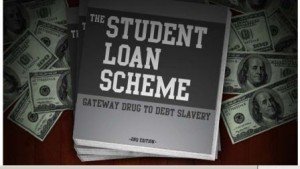 Before you do sign, be sure to pay close attention to what CollegeScholarships.org has to say. One of the most critical points centers upon the legal changes that have taken place in recent years.
Before you do sign, be sure to pay close attention to what CollegeScholarships.org has to say. One of the most critical points centers upon the legal changes that have taken place in recent years.
The result is that as of 2005, college loan debt is nearly impossible to discharge. Student loans are exempt from a number of fair practice laws: statue of limitations on collections, the Truth in Lending Act, the Fair Debt Collection Practices Act, adherence to state treasury laws and the right to refinance.
Furthermore, the harshest collection techniques are often used to collect student loan debt. They include wage garnishment (which can be done without a court order), the suspension of state professional licenses, garnishment of social security-disability incomes, and withholding your tax refunds.
All of this and a great deal more is available in the graphic. And the final piece that every student should be aware of is that 25% of all government student loans go into default. Furthermore, 30% of those students borrowing to attend community colleges and 40% of those borrowing for two year colleges go into loan default.
These figures match or exceed the numbers (25% in default) from the recent subprime home loan debacle that has crippled our economy. But in the case of home loans, a person can essentially walk away from the loan. Yes, they lose their home. And yes, their credit rating plummets.
But ultimately, they can simply turn the house over to the bank and move on with their lives. No future wage garnishments, no withholding a federal tax return, and no suspension of a state license.
On the other hand, as we noted that is not true for student loans. You cannot walk away from them – you own them for life.
It is important for students to realize that the credit card debt crisis (and the subprime loan fiasco) has spurred a whole new culture among a large segment of our population. Actually it may be new to us but in reality it is the return to the pay-as-you-go philosophy that earmarked our grandparent’s generation.
As you seek sources of funding to help pay for college think twice about borrowing. A good many people have already decided that a return to a pay-as-you-go philosophy is a good step for credit cards.
But if it is a good step for credit cards, then it is likely a must step for college. Because, as the College Scholarships.org graphic points out, those college loans will follow you everywhere.
With permission, we present the graphic here.
Infographic by College Scholarships.org
Today the written word features extensive hype and hyperbole. After all, that is what draws readers to a paper or web site.
So it was no surprise for us to come across the following headline: The Awful Reality Of America’s Student Loan Nightmare.
At first, it sounds like a massive case of overhype does it not?
Well, such a title is rendered much more relevant when we understand that it is on a web site such as BusinessInsider.com. Then, when one reads the article and learns of the debt some students have accumulated we have to agree the term nightmare is more than apropos.
 Consider further the Chronicle of Higher Education and its recent independent research on the topic.
Consider further the Chronicle of Higher Education and its recent independent research on the topic.
According to their data, of the student loans that entered repayment in 1995, one of every five has since gone into default. That’s correct, fully 20% of those who borrowed could not meet the expectations set forth in their repayment schedule.
Fast Forward to 2010
While one in five is truly scary, one needs to understand that the average student loan debt from that period was roughly $13,000. Today it is nearly double that figure, $23,000 plus.
One might suggest, using simple math, that fifteen years from now we might expect a doubling of the rate of default.
So no, the crisis isn’t hyperbole. According to the Wall Street Journal, “consumers now owe more on their student loans than their credit cards.” According to the June 2010 figures from the Federal Reserve, Americans owe some $826.5 billion in revolving credit. The total owed on student loans comes to $829.8 billion, according to Mark Kantrowitz, publisher of FinAid.org and FastWeb.com.
Over at the Huffington Post, op ed writer Zac Bissonnette noted the Chronicle data and went on to note that defaults are only the tip of the iceberg when it comes to the impact of student loans. Many students who were not in default likely managed to stay in good standing only by accepting career options based on pay instead of goals and lifestyle choices based on debt as opposed to following their heart.
Bissonette writes:
“Looking at the default rate as a measure of difficulty in repayment is a lot like analyzing obesity in America by looking at the percentage of people who are so fat that they’re unable to get out of their chairs.”
Avoid the Nightmare
For the most affluent students such horror tales are likely irrelevant. After all, the cost of college is not much of an issue for those with means.
But for the average American, the cost of a four-year degree is more than significant. And sadly, for most students, that extensive price tag becomes affordable only when loans are considered.
But students must understand that college loan debt is far different than credit-card debt. First and foremost, college loans generally can’t be discharged in bankruptcy.
Second they often have very different repayment terms. Those terms often have heavy consequences for anyone who misses payments.
Before Taking any Loans
Yes, the crisis is for real. And today’s tough economic times are only exacerbating the issue for grads who took out loans.
 So before you are enticed by the lure of a college degree and the draw of a life on-campus, think carefully about how you are going to pay for that experience. There are a number of important things to consider before agreeing to any loans in your financial aid package.
So before you are enticed by the lure of a college degree and the draw of a life on-campus, think carefully about how you are going to pay for that experience. There are a number of important things to consider before agreeing to any loans in your financial aid package.
We suggest you take the time to review Six Things To Know Before Taking Out A Student Loan published at Forbes.com. All of the suggestions are extremely important though there are two we definitely want to highlight.
Number three notes you must have a sense of your probable earning potential after you graduate. In simplest terms, if you are studying to be a teacher you cannot take on the same debt load as someone studying to be a doctor. The average student loan debt of $23,000 is most likely too much for someone entering the teaching profession.
And number six notes you have to set an amount you are willing to borrow. It is imperative that students do their homework up front to be able to set a dollar amount limit on what they will borrow based on their future goals. Once that has been set, students will have a real sense of what they can truly afford in their choice of a school, whether or not they can afford to live on campus or must commute from home, whether to work part-time and attend school part-time, etc.
Across the Atlantic there have been discussions about a radical new way for students to pay for college. Instead of either cutting programs or raising tuition, governmental officials are proposing the possibility of defraying increases and paying for those costs by assessing taxes against a student’s future earnings.
According to the Daily Mail, the majority of the students in the UK currently take out loans of about £3,225 a year at low interest rates and pay them back after they graduate. The process is analogous to that of the US except the debt level of students in the UK is limited.
Tuition fees are assessed as a flat rate charge generally paid in installments after a person graduates. However, the poorest students in the UK are not required to pay back any funds while the student debt for the more affluent is still limited to a specific amount.
But as with America, UK universities are currently faced with cutting services or raising fees. According to the Daily Mail, rather than make programming cuts, administrators want to increase fees by about £5,000 a year.
A Graduate Tax
 As a possible different option, the idea being floated is to impose a graduate tax that would require students pay a percentage of their future earnings for a specific time period. Such a concept means that the payback amounts would vary from student to student depending on what he or she earns in the future.
As a possible different option, the idea being floated is to impose a graduate tax that would require students pay a percentage of their future earnings for a specific time period. Such a concept means that the payback amounts would vary from student to student depending on what he or she earns in the future.
Critics immediately pounced on this fact insisting that those students earning more would in effect be penalized. The Mail reports that the Russell Group of top universities “calculates that graduates in the upper 20 per cent of earners could end up paying at least £16,000 a year – far more than the cost of their education.”
However, as America grapples with making education more affordable and increase access to higher education for the neediest students, the graduation tax represents an interesting approach. First and foremost, if tuition and fees were waived, higher education would truly be affordable to students from all walks of life.
Second, graduates who struggle to find jobs initially often have their entire future placed in jeopardy especially if they had to borrow a significant amount to pay for school. Those individuals face enormous pressures when the six month loan deferment period ends and the initial payment schedule begins.
One Possible Prong
When it comes to addressing the issues of higher education, both the affordability of college and the desire to have more students pursue a degree, federal and state government would do well to examine the graduate tax option. A modest percentage assessed against future earnings could prove to be a very viable exchange for those first generation college students struggling desperately to find money to attend school at this point in their lives.
In addition, making that option available only to those who attend a community or state university branch would ensure more students would pursue education at the most reasonable cost. While we are not convinced that the major concern being expressed is legitimate, it would be easy to take care of the issue of those who earn more money being forced to pay back far more than those who earn less. Creating a time period certain and a cap on total payback would easily take care of any issues.
Of course, we would prefer the UK option of no payback as well as no tax for the most needy students. But faced with higher costs and the potential for significant debt, some American students would seemingly do well if the graduate tax option existed.
Once upon a time, there was a belief that there was such a thing as a good loan with the general consensus being that the two most common ‘good’ forms of borrowing were home and college loans.
Then came the recent economic downturn and the housing crisis. All of a sudden, many homeowners found themselves owing more on their homes then their houses were worth. That development now has many folks realizing that borrowing funds for a home may not always be a good idea.
 In addition to the housing meltdown, the economic crisis has taken a toll on employment opportunities. Those graduating from college this spring are about to enter what has been dubbed the worst job market in years.
In addition to the housing meltdown, the economic crisis has taken a toll on employment opportunities. Those graduating from college this spring are about to enter what has been dubbed the worst job market in years.
With limited job prospects, large numbers of graduating students are being forced to take jobs that do not require a college diploma. If you are one of the students who borrowed significant sums of money only to be forced to take a job waiting tables or bar tending, you now have begun wondering why borrowing for college was ever seen as a ‘good’ idea.
College Grads Seeking Work
According to the Center for Labor Marketing Studies at Northeastern University, the percentage of graduates age 25 and under with a BA degree working in a job requiring a college degree has now dropped below 50 (as of 2009). Therefore, if you are graduating this spring, you face the distinct possibility (a one in two chance) that you will have to enter the work force by taking a job that does not require a bachelor’s degree. Such a development also means that one out of every two graduates cannot expect to earn a salary commensurate with their original career aspiration.
If you are a girl, the survey indicates that you have a slightly better chance to secure a job requiring a college degree. For women 25 and under, 55% (as compared to 49% for men) are currently working in a job that at least requires a college degree.
Worse yet is the data for young adults of Hispanic or African-American descent. For Hispanic males, just 40% of those with a degree are working in a job that requires a diploma. For black males, the number is a paltry 35%.
Loans Due and No Funds to Pay Them
While these percentages represent some of the worst numbers in the past 20 years, the current belief is that the downward trend will continue for the foreseeable future. Given the data, those pursuing a college diploma need to carefully reassess their aspirations. In particular, those thinking about borrowing money to pursue a degree need to carefully take stock of the current job environment.
Data clearly indicates that college graduates who take jobs below their education level will earn less in their initial work years. In fact, it can take seven to nine years to match the earnings of graduates who were able to land career-track employment upon graduation.
When one combines such data with other troubling numbers, that two-thirds of college students are graduating with student loans and that 25% of those who borrow end up owing more than $30,500, the results are startling. That is why 40 percent of seniors surveyed by NACE said they expect to need financial help from their parents after college.
 The result is that students in this economic climate who borrowed even modest amounts of money have additional pressures upon them, the need to pay college loans. For that reason, graduates often find themselves taking any job that is offered just so as to begin the process of paying down those loans.
The result is that students in this economic climate who borrowed even modest amounts of money have additional pressures upon them, the need to pay college loans. For that reason, graduates often find themselves taking any job that is offered just so as to begin the process of paying down those loans.
Even when employment options are available, those who borrowed for school are driven to select the job that pays the most. Students with significant debt generally continue to choose options based on what a job pays rather than pursuing the original career that inspired them to attend college in the first place. Significant college debt loads also lead to the potential delay in starting a family and/or buying a house.
When it comes to borrowing for college, the standard rule at one time was not to borrow more than your projected starting salary. Once upon a time, students could roughly gauge just what that starting salary would be.
Given the recent downturn and the difficulty finding work in your chosen field, such projections are no longer valid. In fact, given today’s economic climate, your starting salary will likely be far lower than those original projections for the foreseeable future.
That means that loans of any size will prove extremely challenging to pay off. Ultimately, borrowing money for college during an economic downturns appears to be a very bad idea.
All federal loans set to follow the Direct Loan program format.
Lost in all the hype over the passage of the landmark health care bill was a provision in the bill to revamp the federal student loan program. The legislation will put an end to the popular FFEL Program and thus push all federal college loans into the Direct Loan format.
The FFEL and DL Programs
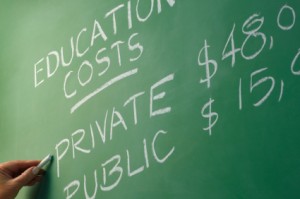 The Federal Family Education Loan Program (“FFEL Program” or “FFELP”) is often referred to as the federally guaranteed student loan program. In FY 2008, approximately 75% of all colleges participated in this lending option.
The Federal Family Education Loan Program (“FFEL Program” or “FFELP”) is often referred to as the federally guaranteed student loan program. In FY 2008, approximately 75% of all colleges participated in this lending option.
As opposed to the loans originating from the federal government, in the FFEL program the loan funds come from banks and other financial institutions. Because of the large number of entities offering such loans, colleges participating in the FFEL program were able to maximize borrower choice.
In addition, the FFEL program offered the same set of loan options as the Direct Loan program: Stafford, PLUS and Consolidation loans.
Funds for the William D. Ford Federal Direct Loan Program (“Direct Loans” Program or “DLP”) come directly from the US Department of Education (which gets the funds from the US Treasury). Because of the funding source, this source of aid has not experienced the same funding issues as FFELP has during the current credit crisis.
Program Differences
Critical differences have begun emerging within the two programs. First, as noted above, as the credit crisis worsened and banks tightened their lending practices, less money was available to students in the form of FFELP loans. In contrast, DLP loans remained available.
Unfortunately, the Ensuring Continued Access to Student Loans Act of 2008 (ECASLA) did not address funding issues in all loan programs, just the Stafford and PLUS loan programs. The indirect result was that consolidation loans originating after October 1, 2007 became unprofitable for FFEL program lenders. Because of that development, most of the FFELP lenders have stopped offering consolidation loans.
In contrast, consolidation loans continued to remain available from the Direct Loan program but borrowers in the FFEL program generally could only consolidate their loans by moving into the Direct Loan program.
Two other major differences tend to make the Direct Loan option a better one for students. First, the interest rate on the PLUS loan maxes out at 8.5% in the FFEL Program. For the Direct Loan program, the maximum rate tops out at 7.9% for the PLUS. However, the interest rate on the Stafford Loan is identical in both programs.
 Independent analysis has revealed that parents are more likely to obtain a PLUS loan approval in the Direct Loan program than in the FFEL program. The 2007-08 National Postsecondary Student Aid Study (NPSAS) suggests that the Parent PLUS loan denial rate in the FFEL program in 2007-08 was double the Parent PLUS loan denial rate in the Direct Loan program.
Independent analysis has revealed that parents are more likely to obtain a PLUS loan approval in the Direct Loan program than in the FFEL program. The 2007-08 National Postsecondary Student Aid Study (NPSAS) suggests that the Parent PLUS loan denial rate in the FFEL program in 2007-08 was double the Parent PLUS loan denial rate in the Direct Loan program.
Lastly, the new Public Service Loan Forgiveness option is available to students only in the Direct Loan program.
Customer Service Impact for Students
On the plus side, according to the Congressional Budget Office estimates, eliminating the middleman from the loan process will save the federal government between $6 billion and $7 billion per year. Those savings are reportedly possible because the government has paid private banks billions of dollars in subsidies to encourage those institutions to loan to students.
On the negative side, the changes will result in the loss of a number of valuable agencies.
But for most college students, the major question centers upon how the legislation affects them and their families. The answer is that it will impact students according to their financial status.
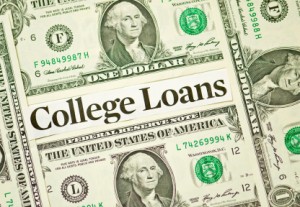 An enormous increase this year in Pell grants was set to create a major shortfall in fund for many low-income students. The legislative change ensures that the Pell grant program will not only remain solvent, it will provide annual increases in the maximum grant allocation for the foreseeable future.
An enormous increase this year in Pell grants was set to create a major shortfall in fund for many low-income students. The legislative change ensures that the Pell grant program will not only remain solvent, it will provide annual increases in the maximum grant allocation for the foreseeable future.
Second, the funding level for students will be more secure. Therefore, those students who recently found loans drying up during the fiscal crisis will now know that such funds will remain available.
Lastly, the legislation will do nothing to negatively impact existing loans including private loans. But for those individuals who later qualify for the Income-Based Repayment Program, the capped rate will drop from 15% to 10% of discretionary income and shorten the repayment window from 25 to 20 years.
In actuality, the greatest impact will be felt with the school’s financial aid officers. One critical outcome is that those individuals will no longer play a role in which private lenders are used to originate those loans for students.
But of course, at this point, only the House has approved the bill. The Senate is scheduled to take up the bill later in the week.
Five reasons why the aid act may be bad for students.
There has been a pause in Washington as all eyes focus in on the healthcare debate. But very soon the Senate will be taking up an important measure related to college students and financial aid that was previously approved by the House.
TheMiddleClass.org offers the following summary of that bill, The Student Aid and Fiscal Responsibility Act of 2009:
The Student Aid and Fiscal Responsibility Act terminates the Federal Family Education Loan program, which provides subsidies and guarantees to private lenders that make student loans. Instead, the federal government would issue student loans directly to borrowers. Ending the subsidization program would save the government $87 billion over ten years. The Act ensures that interest rates on student loans remain affordable. Additionally, the legislation increases the maximum Pell Grant, a need-based grant designed for lower-income students, from $5,350 in 2009 to $5,550 in 2010 and $6,900 in 2019.
The Student Aid and Fiscal Responsibility Act includes funds for programs to encourage completion of college and subsequent employment, particularly for students from underrepresented backgrounds; for Historically Black Colleges and other minority-serving institutions; for early-childhood education; and for school modernization and repair. The bill also provides funds for improving the community college system. The legislation simplifies the Free Application for Federal Student Aid (FAFSA), which determines eligibility for student aid.
Such a summary has most folks taking the stance that the recent approval of the legislation by Congress is a massive step forward for students and families. As but one example, the Seattle Times offered extremely high praise, noting that “Congress’ overhaul of the college student-loan system offers welcome relief to students at risk of drowning in debt.”
College students backing SAFRA recently put together a YouTube video:
Certainly the legislation borders on the historic. Terry Hartle, senior vice president at the American Council on Education, indicated that the legislation “is the biggest change in federal loans for higher education since 1965, when the original program was created.”
But those following the issue realize that support for the legislation is falling along party lines: Democrats in support, Republicans in opposition. Therefore, one can quickly surmise that the new program conflicts with certain conservative principles.
Perhaps even more importantly, as the legislation becomes clearer many others, irrespective of party affiliation, have begun questioning this massive change. Indeed, after listening to those critics, we too have begun to wonder aloud.
Is the legislation really a positive step for students and their families?
Issue One – Categorizing the Middle Man as a Corporate Monster
One highly touted aspect of the legislation is the move to make the federal government the direct lender to students. In taking this step, the goal is to remove the so-called ‘middlemen’ from the loan process.
Banks are certainly pushing back, after all college loans have served two purposes. The interest on the initial loan is but one positive element for banks. A second and perhaps larger segment has to be the opportunity to create new customers.
But while most equate banks and profits with the middlemen term, the fact is there are many local agencies handling the loan process for students. Most are nonprofits, working to ensure that the loan process, from borrowing through repayment, goes smoothly.
The legislation as currently enacted eliminates all agencies handling these funds including some highly-valued nonprofits. For example, one such nonprofit, the New Hampshire Higher Education Assistance Foundation (NHHEA), works with nearly 30,000 New Hampshire students and parents each year, offering free college planning and information related to financial literacy and financial aid.
But under the proposal, intuitions such as NHHEAF would also be eliminated.
Issue Two – A Potential Increase in Loan Defaults
As noted previously, these local nonprofit centers focus on educating students in all financial matters. They not only offer financial literacy programs for student borrowers and financial aid preparation for students and their families, they also offer programs that promote early college awareness.
Such training goes a long way in terms of developing greater student understanding of the loan process. As but one example again, NHHEAF can claim one of the lowest default rates in the nation.
Needless to say, this loss of local services could well mean far more in the way of potential student loan defaults.
Issue Three – No Savings for Students or Families
Clearly there is major support for “eliminating subsidies to lenders,” particularly after what has transpired over the last year in the financial world and the role banks have played in it. But upon hearing of the elimination of these subsidies, the public immediately assumes the result will be a reduction in program expenses.
It appears instead of passing along savings to students, the current proposal may well cost students more. According to the Chronicle of Higher Education, the “federal government isn’t providing any breaks to the students” and ultimately will be making more off the program than lenders ever could.”
It may well be that the money raised will be doled out in the form of increased Pell Grants, but those grants will essentially be funded from students paying off other loans, not necessarily from increased support from the federal government.
In addition, those schools currently utilizing other loan programs will need to invest staff, time and money to change systems and processes. This would need to take place at the same time that schools have axed budgets to the bare bones.
The costs associated with implementing the program will likely be passed on to students through increased tuition and student fees.
Issue Four – Handling the Increased Demand
The legislation by Congress assumes that the government can effectively and efficiently step up and run the new program. According to Martha Holler, a spokesperson for Sallie Mae, in order to implement the proposal, “about 4,500 schools would have to convert lending systems. It’s not like putting a different disk in their PC; the whole system has to be reworked.”
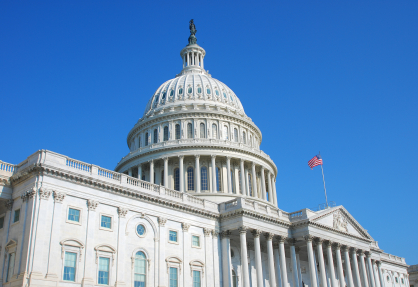 The result, “The U.S. Department of Education will be tasked with converting an average of nearly 500 schools a month over the course of a nine month period,” notes Tara Payne, Vice-President of Corporate Communications for NHHEAF. “Since the Direct Loan program’s inception in 1993, roughly 1,600 schools have been converted over a 16 year time-frame.”
The result, “The U.S. Department of Education will be tasked with converting an average of nearly 500 schools a month over the course of a nine month period,” notes Tara Payne, Vice-President of Corporate Communications for NHHEAF. “Since the Direct Loan program’s inception in 1993, roughly 1,600 schools have been converted over a 16 year time-frame.”
Issue Five – Increasing the National Debt
According to the Office of Management and Budget (OMB), under budget proposals that include the switch to 100-percent Direct Lending, the debt held in the Government’s various Direct Loan accounts is expected to rise from $632 billion in FY 2009 to $1.58 Trillion in FY 2019, an increase of more than $900 billion. Therefore, nationalizing the direct loan program will add substantially to the national debt over the next decade.
This means that those who benefit from the loans will actually pay twice, once when paying off the original loan and a second time when he or she pays the taxes necessary to eliminate the ever increasing national debt.
Of course some insist that the basis of the proposal is to deal with the larger budget issues, that any savings created by program changes will be used to plug budget gaps instead of providing additional funds for higher education.
Questioning the Change
These five issues have us and others questioning the government take-over of a public-private program that has seemingly supported students and schools, especially those who have borrowed judiciously in the past.
High school students looking to learn more about the college application, admissions and choice process have a great upcoming opportunity next month.
CollegeWeekLive, the world’s biggest virtual college fair, has been set for March 25th and 26th. Featuring more than 250 colleges and universities from around the world, the annual event is expected to see as many as 28,000 attendees.
What makes CollegeWeekLive so unique is that it offers all of the standard college fair information that students seek when attending such an event but does so in an online format. Therefore, from one’s home or school computer, a prospective college student has access to a wealth of information in a cost-effective and convenient manner.
 The bi-annual event (held each November and March) offers students access to some of the top experts in the field. Virtual fair attendees can watch admissions experts speak on SAT preparation, the application essay process and or how to pay for college. Attendees will also be able to ask various questions via live chats.
The bi-annual event (held each November and March) offers students access to some of the top experts in the field. Virtual fair attendees can watch admissions experts speak on SAT preparation, the application essay process and or how to pay for college. Attendees will also be able to ask various questions via live chats.
The event will also feature virtual booths for the various colleges taking part in the fair. These booths will offer student attendees electronic brochures, videos, webinars, and podcasts related to the school. In addition, students will have the opportunity to real-time Instant Message and/or video chat with admissions counselors and students from those institutions.
As for the specific, potentially-valuable presentations for students March 25th offers:
 On the second day, March 26th, scheduled topics and presenters include:
On the second day, March 26th, scheduled topics and presenters include:
More details on the proposed agenda as well as relevant links to some of the presenters are available on the CollegeWeekLive agenda page.
Though the program should be extremely worthwhile, as an added incentive to folks, College WeekLive will be giving away a brand new 13-inch aluminum MacBook to one lucky attendee of the fair! . There is a video contest and the chance to win a $2,500 scholarship to the college of your choice.
And if you attended the November CollegeWeekLive and are still a current high school student, you can also complete a survey that will make you eligible to win an iPod Touch or a $300 donation to the charity of your choice. High school seniors will find the link to their survey here while underclassmen will find a separate survey at this location.